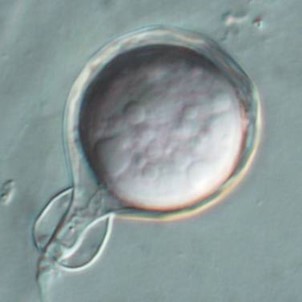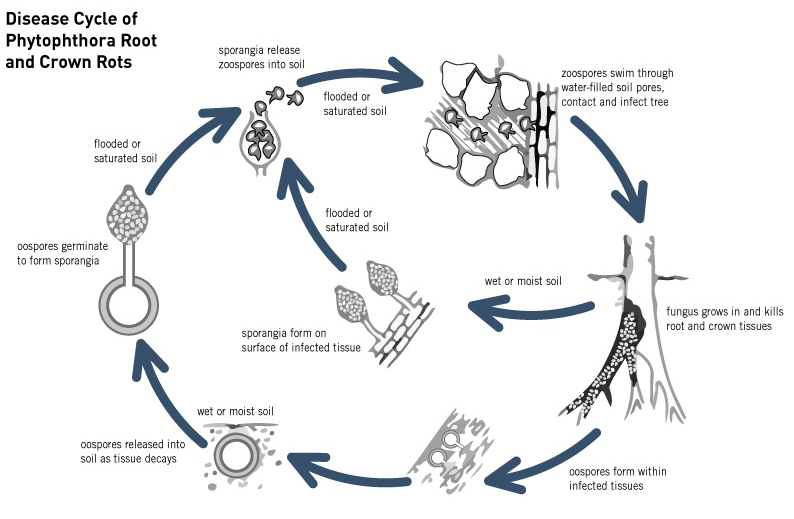Going into a Kauri forest?
We can all help to protect Kauri by following correct hygiene protocols when we go into Kauri forests.
What is the PA pathogen?
The pathogen that causes disease in kauri, was first recorded on Great Barrier Island in the early 1970’s but was misdiagnosed as another Phytophthora species at the time.
In 2006, kauri were observed to be dying in the Waitakere Ranges, and authorities were alerted and an investigation commenced. As a result of this investigation, a new unidentified species was discovered and tentatively given the name of Phytophthora ‘taxon Agathis’. This was formally named in 2015 as Phytophthora agathidicida.
We have a good understanding of the basic biology of Phytophthora agathidicida and the disease symptoms it produces on kauri. The pathogen could survive in the soil for many years even if kauri are not present in the area.
How does it affect kauri?
Phytophthora agathidicida damages the tree’s root system, reducing the tree’s ability to take water and nutrients from the soil and transport it throughout the plant.
The pathogen produces a definite but not unique symptomology. Initial signs of infection can be yellowing of the leaves; eventually branches starve and die before the whole tree succumbs. Trunk lesions can also occur, although not all infected trees show these.
It can take years for dieback symptoms to appear. We’ve learned that seedlings may show symptoms within weeks of being infected. In juvenile trees, it may take a few years or more for symptoms to appear, and even longer in mature trees, possibly decades.
Though these symptoms help us identify potentially infected trees, you often can’t tell by looking at the tree themselves. Similar symptoms may occur for other reasons like drought or age. Ultimately, the disease can be difficult to detect.
Although we know more on how kauri are infected, the level of severity (or virulence) and latency of the disease in kauri is less understood. We don’t know exactly what factors enable the pathogen to cause disease symptoms in some trees more quickly than others. Diseases generally take hold when an organism is under stress, and scientists expect it’s the same with kauri. However it’s likely environmental conditions – such as temperature and soil moisture– play a critical role in the introduction and speed of the infection process.
Although we know the disease has significant impacts on kauri, we are still trying to determine the long-term impacts.
As a keystone species, kauri play an important role in the type of flora that resides in a kauri forest. Many plants have evolved to live on and around kauri due to the type of soil that is developed over time. Without kauri, the ecosystem is likely to be very different. There has been research looking at the long-term impacts of the disease and determining the ecological composition around healthy and diseased kauri, however a lot more research is required.

The pathogen infects new trees in seven steps
- Oospores (resting spores) are introduced into an area of kauri, typically by human activity, but also by animals such as pigs. It only takes a pinhead of soil to move enough oospores to spread the disease.
- The oospores germinate to form sporangia (a structure which produces zoospores).
- Zoospores are released during and immediately after rain.
- The zoospores swim (propelled by their tails) through moisture in the soil towards a kauri’s roots, where they attach themselves to the outside. They then germinate to produce mycelia (branded tubular structure) which infects the root. The tree’s fate is now sealed.
- The mycelia spreads through the root system to attack the tissues at the base of the kauri’s trunk (eventually stopping the transport of nutrients and water to the canopy).
- More sporangia are formed from where there are areas of infected root. These sporangia release more zoospores during and after rain, ensuring that it is only a matter of time before any other kauri in the vicinity are infected.
- More oospores form within the tree's infected tissue. These are released into the soil as that tissue decays.

Where did it come from and how long has it been in New Zealand?
It is not certain how long the pathogen has been present in New Zealand. We have records that show it has been in New Zealand since the 1970’s and there is some anecdotal evidence that suggest that the disease has been killing kauri since the 1950s, perhaps a lot longer. There is some research to suggest that it came from overseas (probably somewhere in the Indo-Pacific), however the true origin of the disease remains unknown.